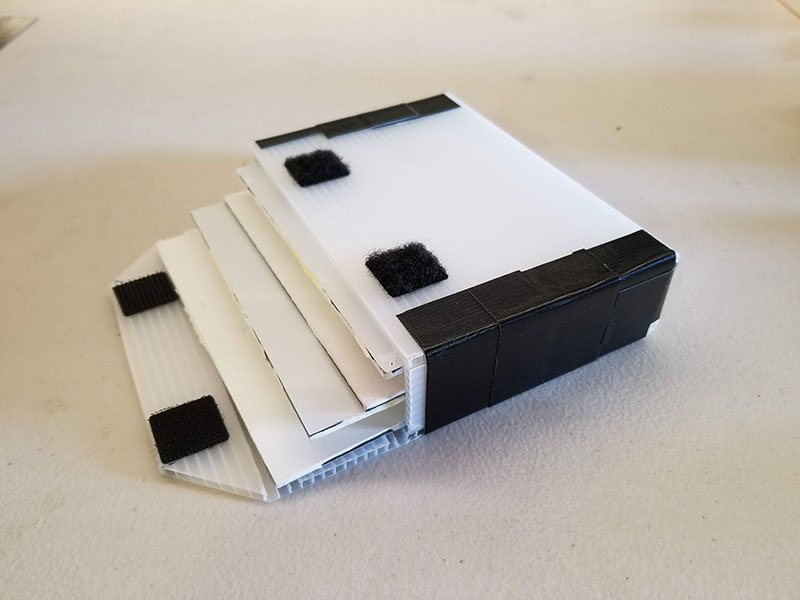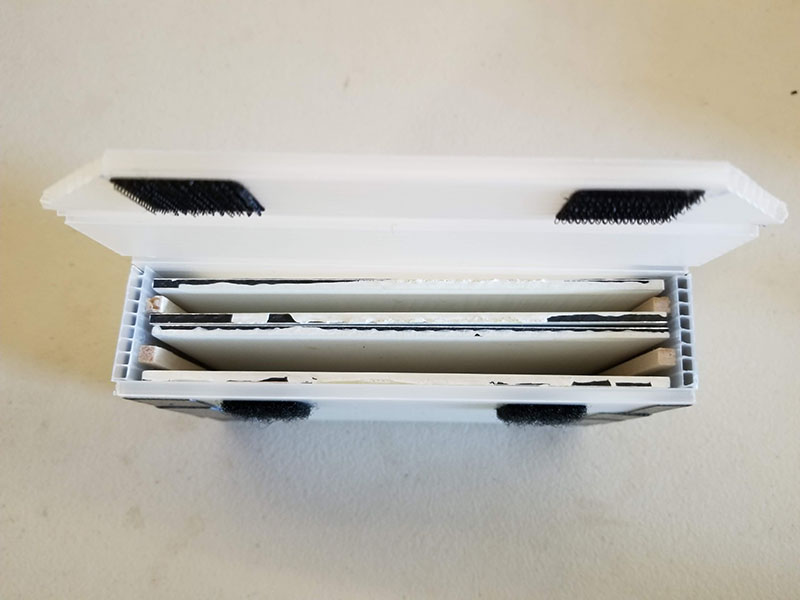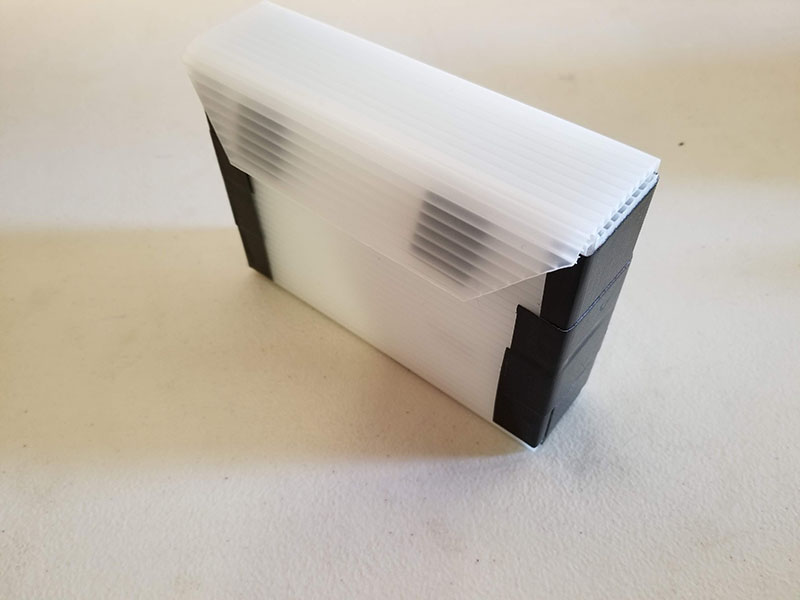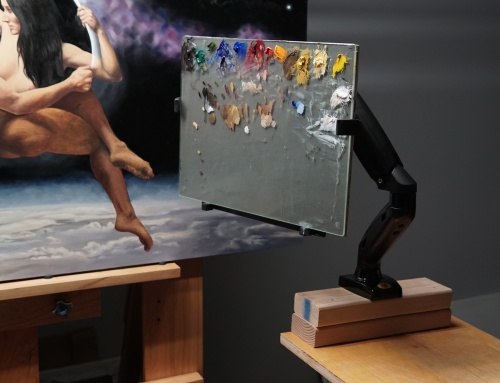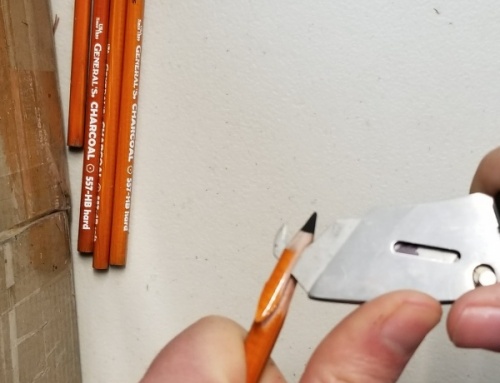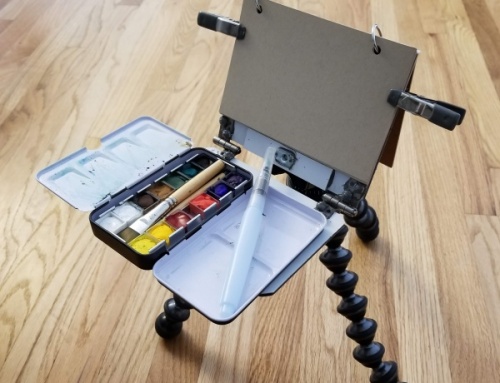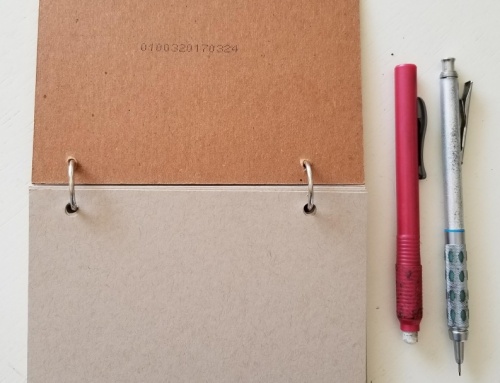For the longest time I struggled with how to carry wet oil painting panels after I finished Plein Air painting. Depending on the session, I would either end up carrying the panel open to the air, taped to a palette, or slid into a pizza-box styled contraption. Neither option allowed for multiple wet panels and both were fairly awkward during the hike back to the car. It wasn’t as much of an issue when I was Plein Air painting with a heavy French Easel, as I never wandered too far from my vehicle, but as my painting kit got smaller and lighter (I made an oversized 6×10 “One Pound Painting Project” easel for oil painting) I found myself venturing further out into the field.
My research showed that there was a solution already in the form of wet panel carriers. Picture frame rabbet widths (the overhang) tended to be 1/4″ or more so these carriers would use tiny lips to hold wet panels in place. If the edge of the painting was marred a little bit it didn’t matter as it would be hidden by the frame rabbet.
At $20+ each for the cheapest options and up to $100+ for fancier wooden versions, having a variety of sizes ready to go would get expensive quickly, so I decided to make my own for much less. Ultimately, for just a few dollars each and a little time, I was able to create my own homemade wet panel carriers.
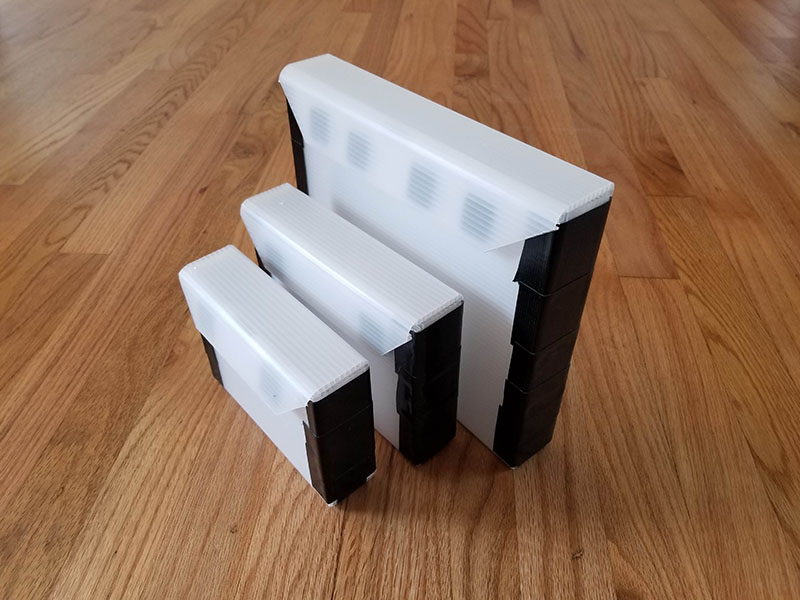
Recommended Materials & Tools
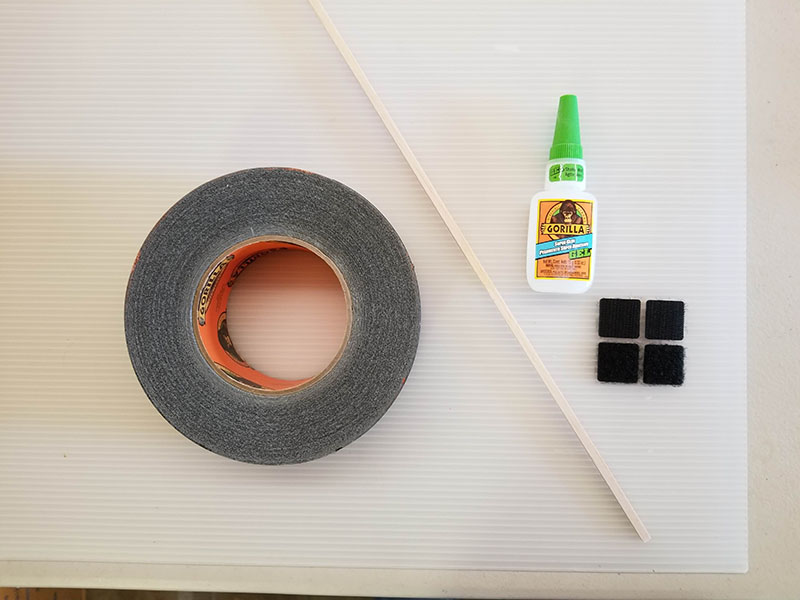
- Corrugated Plastic Sheet
- May be available individually at your local hobby store, but if you want to have a variety of sizes, it might be useful to grab several.
- 3/16″ Square Wooden Dowel
- Also may be available individually at your local hobby store, but this would be a lifetime’s supply.
- Velcro Squares
- Black Gorilla Tape
- Gorilla Super Glue Gel
- Sandpaper
- X-acto Craft Razor
- Ruler
Measurements
These are the rough measurements for a variety of carrier sizes based on using a corrugated plastic sheet 1/8″ (approx 4mm) thick. In actuality, for some of the cuts you will be cutting “at the nearest rib” of the corrugated plastic instead of the exact measurement.
The image to the right has the names of the main sections labelled for identification. The sides (not pictured) are just rectangles cut from scrap corrugated plastic and the sticks (not pictured) are cut at the lengths specified.
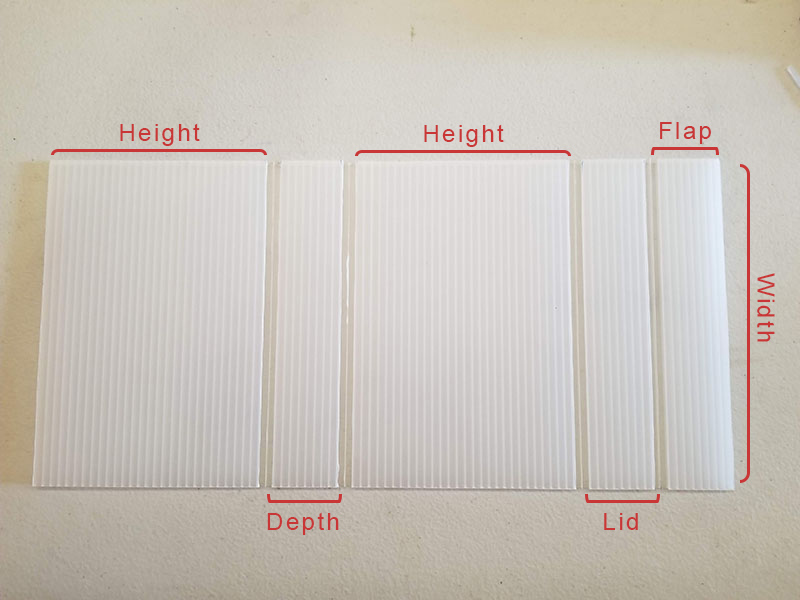
4×6
- Width: 6 5/16″
- Height: 4 1/8″
- Depth: 1 1/8″
- Lid: 1 1/2″
- Flap: 1 1/4″
- Sides: 1 1/4″ x 4 1/16″
- Stick length: 3 1/2″
5×7
- Width: 7 5/16″
- Height: 5 1/8″
- Depth: 1 1/8″
- Lid: 1 1/2″
- Flap: 1 1/4″
- Sides: 1 1/4″ x 5 1/16″
- Stick length: 4 1/2″
8×10
- Width: 10 5/16″
- Height: 8 1/8″
- Depth: 1 1/8″
- Lid: 1 1/2″
- Flap: 1 1/4″
- Sides: 1 1/4″ x 8 1/16″
- Stick length: 7 1/2″
Cutting The Main Section
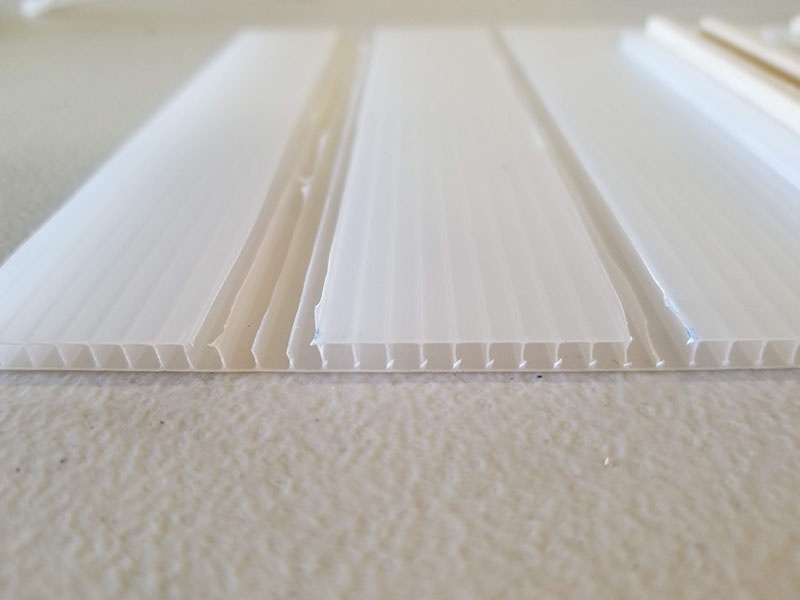
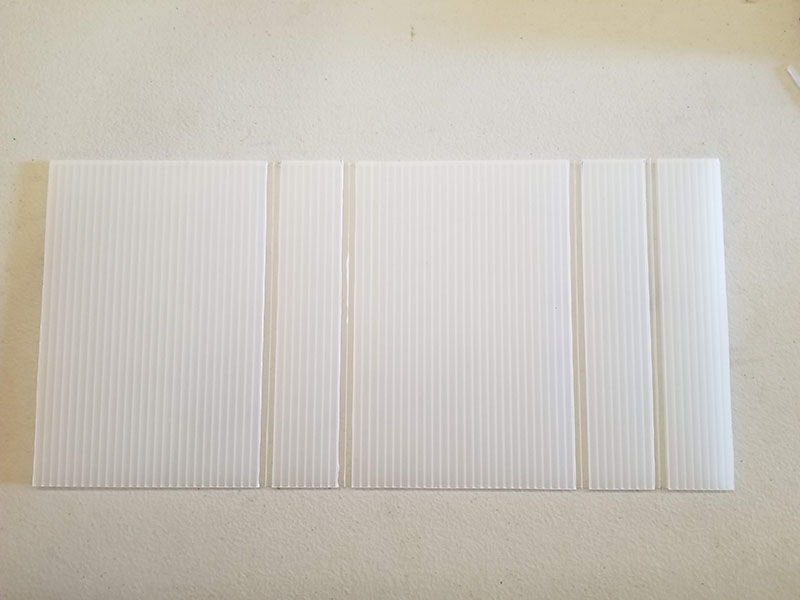
To start, choose the width of the panels you would like to carry. I have a few measurement listed above and will use the 5×7 Wet Panel Carrier as an example to explain the reasoning behind the measurements. This way you can adapt these instructions to any size you choose. Once you know the width of panels (eg: 5×7″), add 5/16″ to the width (so a total of 7 5/16″) and cut your corrugated plastic sheet perpendicular (across) the plastic ribs. The 5/16″ accounts for the depth of each side’s plastic sheet (1/8″ each) plus an extra 1/16″ wiggle-room so your panels aren’t an impossibly tight fit.
Cut all the way through the sheet and across the entire length, leaving you a section of corrugated plastic the length of your sheet and the width you chose. Place the other section off to the side for future projects.
After you’ve cut the width of the panel the next step is to cut the bend points. This is where approximations come in, as different brands of corrugated plastic sheets might have a different ribbing distances. For our 5×7 panel carrier example, we’ve already cut the width (7″ + 5/16″) so the first bend point will be the height: 5″ plus an additional 1/8″ wiggle room.
For the purposes of this tutorial, we’re going to start on the right side of the sheet and measure left. Measure 5 1/8″ and find the closest rib. We want to remove the plastic on one side of the sheet, leaving the other side to act as the corner of the box when folded.
Take your razor and gently cut through the top layer of plastic to the left of the rib but as close to the rib as possible. Once you’ve cut that, go two ribs over and cut through the top sheet to the right of that rib. After both have been cut, you should be able to angle the razor enough to carefully cut the center rib (between the last two cuts) and slowly peel that piece of plastic away, leaving a strip similar to the cut on the right side of the first image. If you accidentally cut into the backside of the sheet, do not worry, a little duct tape can be used to reinforce the corner.
After the first bend point has been cut, measure the base (depth) of the panel carrier. You will want to measure to the closest rib again. The carrier is designed to carry four panels, two facing in on the outside edges and two back to back in the middle, which means it needs to have a minimum width of two square dowels (3/16″ each) and four panels (1/8″ each). In the example sizes above I’ve recommended a depth of 1 1/8″ as that gives a 1/16″ buffer per panel so they can easily slide in and out without scraping. After measuring the depth to the nearest rib, cut two spaces out like the previous bend point, starting again to the left of the first rib and finishing to the right of the third rib, removing the center rib and the top layer of plastic.
Continue on and measure the height (5 1/8″) again to get the back of the wet panel carrier and do another “double space” cut like the previous two times. After that bend point has been made, measure the space for the lid (1 1/2″) to the nearest rib. Note that the lid is actually a little longer than base, as it will extend past the outside edge of the front and it needs to account for the extra space the velcro latch will take up.
Instead of being a “double space” bend point though, I would recommend a “quad space” bend point as shown on the left side of the first image. This will give the flap section hinge a little more flexibility when it comes to closing the wet panel carrier.
Finish the main section by measuring 1 1/4″ and cutting all the way through, leaving you with the second image.
Making The Sides
By now you have the main piece of the wet panel carrier already cut out and should have two remaining pieces of corrugated plastic: a small chunk from the remainder of the main section, and a longer one from your very first cut that you put aside. You might be able to get another small panel carrier out of the longer piece so grab the smaller of the two.
Even though the base depth is only 1 1/8″, the bend points have some flexibility in them so to ensure a tight fit the sides are cut 1 1/4″ wide. For the height though, we’ve removed 1/16″ so there is no question that the lid will close properly. This means, with our example 5×7 panel carrier, we will need two pieces of corrugated plastic, 1 1/4″ wide and 5 1/16″ tall. I would recommend cutting them so the ribbing runs vertical, as that will help positioning the dowels later on.
The square wooden dowels can be cut 1/2″ shorter than the height of the panels. In our example, since the panels are 5″ tall, we will want to cut four 4 1/2″ dowels, two for each side.
Once the panels and the dowels have been cut, use some sandpaper to gently sand one side of each of the two corrugated plastic pieces. The plastic is a little too slick for the super glue to bond well so scuffing the surface will provide it some “tooth” to grip.
Each dowel should be super-glued roughly 5/16″ – 7/16″ from the nearest long edge and approximately 1/4″ from the short edges. Use the ribs on the corrugated plastic as an easy guide to get them straight. These numbers do not need to be exact and you can use a pair of spare painting panels to check the positions. A single painting panel should easily fit between the dowels and the outside edges and two panels should fit between the dowels. A little extra slop is okay, you’re checking to make certain the panels aren’t so cramped against the dowels that they’ll scrape when you insert or remove them from the wet panel carrier.
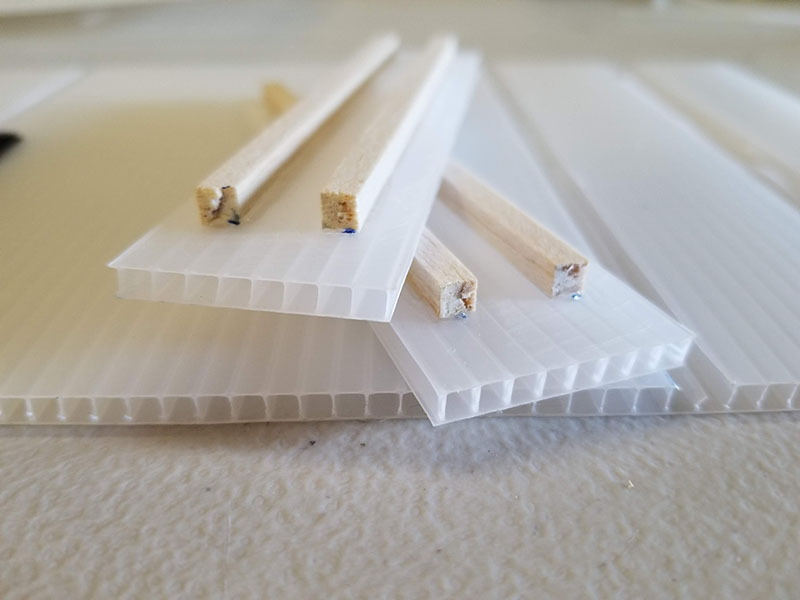
Taping It Together
I’ve personally found Black Gorilla Tape to be the strongest, most durable duct tape available, but you’re free to use any that you might have on hand. I would recommend pre-cutting several 3″ long strips and a single 1″ long strip per side. Use the 1″ strip to tape the bottom of the side to the base and use the 3″ strips to wrap around the sides.
Tape one side, place the other side, and then slide a couple painting panels into the box. If you gesso your own panels, you might want to take a razor blade and trim the sides of them first, otherwise your 5″ wide panels might actually be 5 1/4″ wide thanks to gesso drips. With the painting panels inserted to ensuring a proper amount of space, tape the second side.
Adding The Velcro Latch
Before you add the velcro, if you would like a slightly sleeker look, you can angle cut the flap’s corners. Measure 1/2″ in from the corners and cut to the edge of the bend point. You can see how it looks in my finished DIY wet panel carrier images at the end of the article.
Once you’ve done that, take two squares of velcro (hook side), remove the adhesive protection from them, and place them on the flap. If you are making a larger panel carrier (like 8×10) you might want to use four squares of velcro for security. If you haven’t already, connect their matching piece (loop side) to the pieces you just attached and then remove their backing protection. Close the lid completely, pressing the exposed adhesive onto the front of the wet panel carrier. Doing it this way helps the velcro lines up perfectly!
The Finished DIY Wet Panel Carrier
Congratulations, you have your first DIY Wet Panel Carrier and at the fraction of the price of a commercially available one! If you like, cut a small square (1/2″ x 1″) out of the top edge of the front of the panel carrier. It isn’t completely necessary (and not pictured below), but it does give you a space to grip the unpainted side of the first panel to remove it more easily. For the remaining three panels, you’ll have to use gravity to slide them out a little before removing them.
You might even have enough extra supplies to make a second one (I know I was able to got both a 4×6 and a 5×7 out of the same sheet).
Thank you and good luck with your Plein Air adventures!
